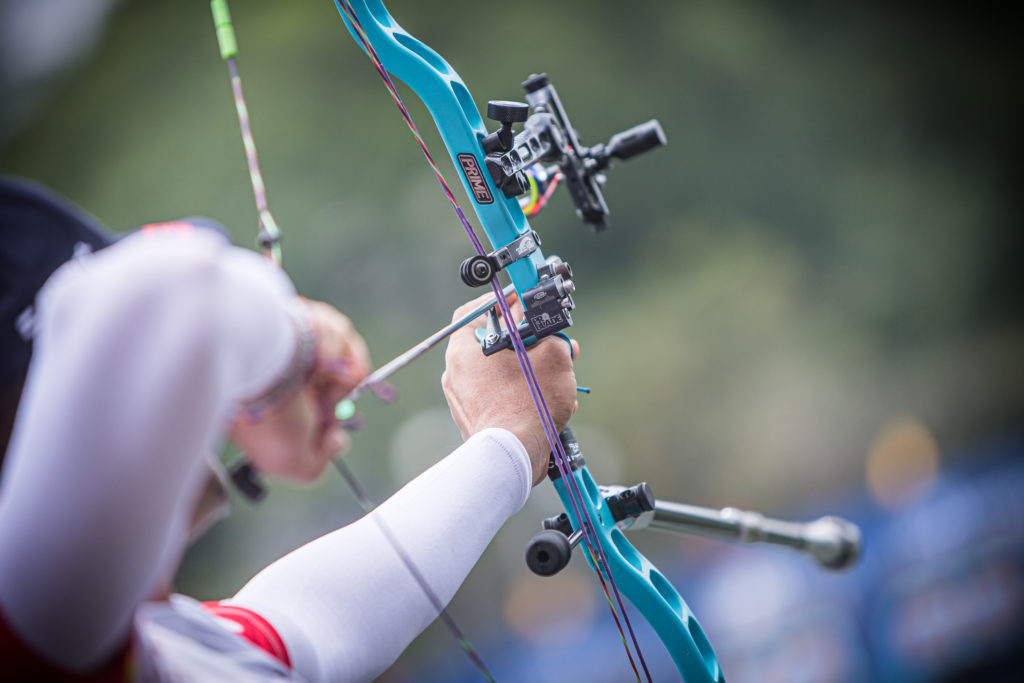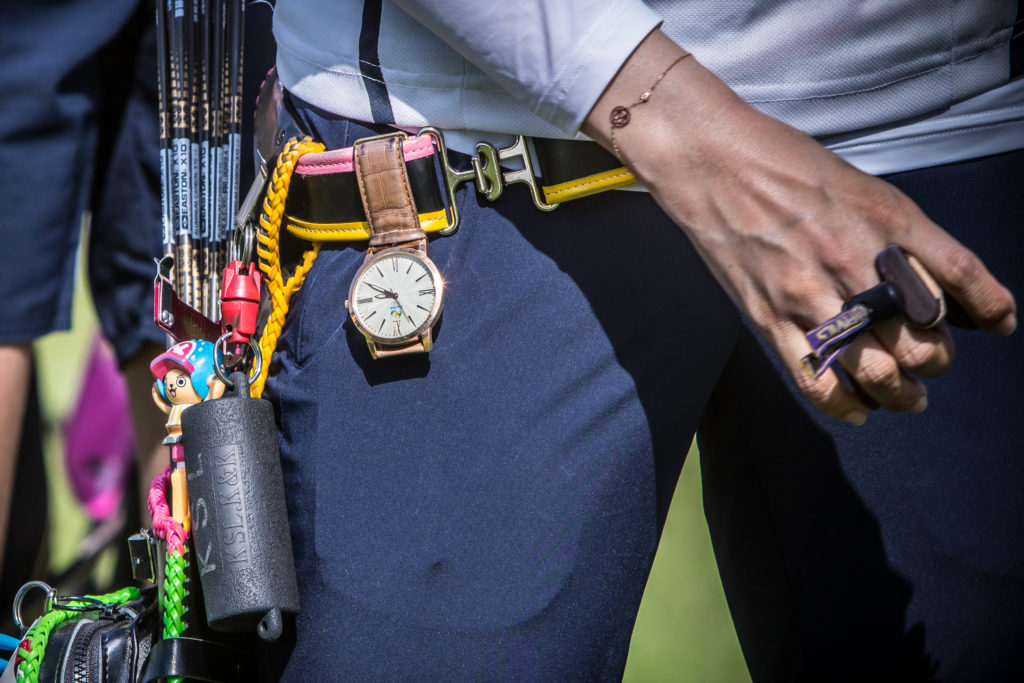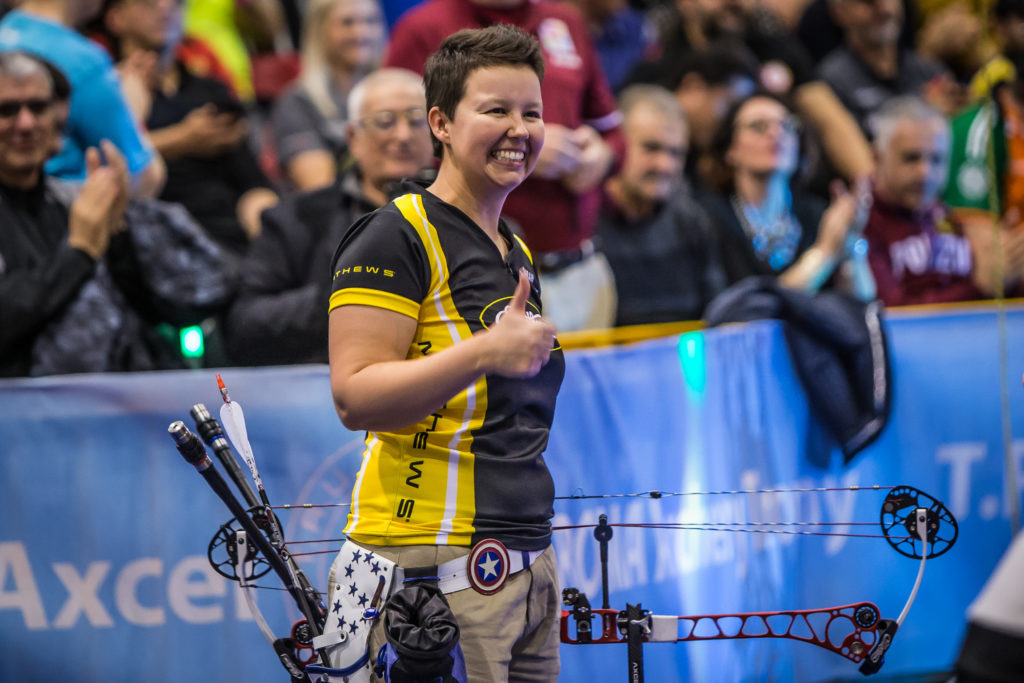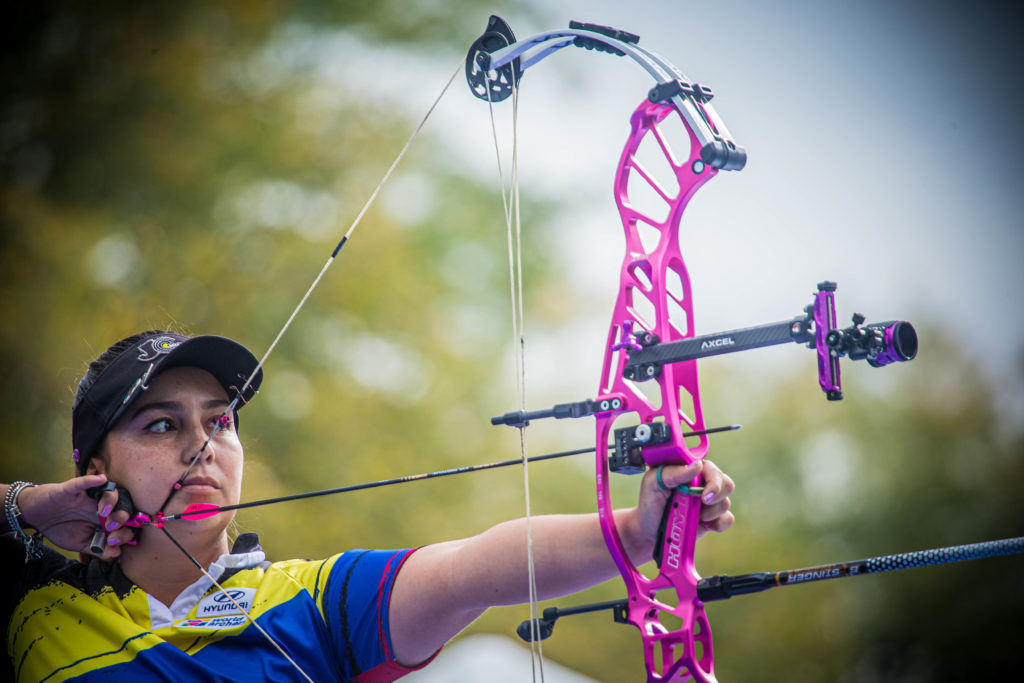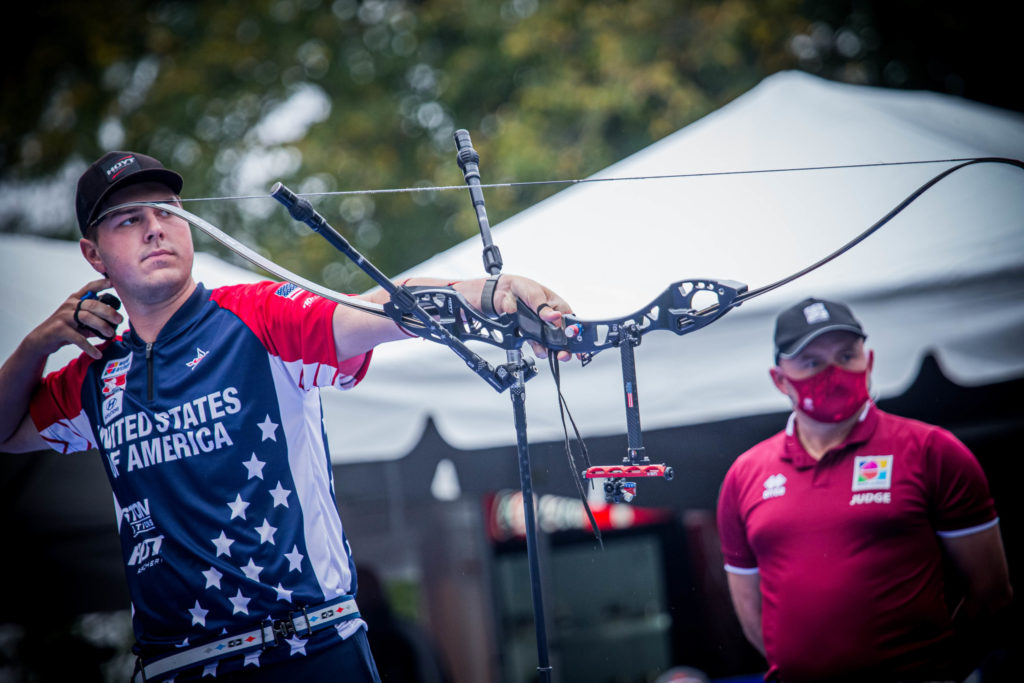Mimi Landström walks us through the new World Archery rule changes and how they will affect international competition
With the past 19 odd months that everyone has been through around the world, we have all had to make adaptations to life, and the sport of archery is no exception. It may not as simple as indoors and outdoors any more. People will likely find themselves shooting indoor rounds outdoors, mixing restrictions and ‘new norms’ with World Archery bylaws changing. What could this mean for competition, as we move forward?
First, let’s run through what changed for the sport during the most recent World Archery Congress (see Bow 155) regarding timings. The bylaw has reduced shooting time from 40 seconds per arrow to just 30 seconds in “individual qualification for Olympic rounds, compound rounds and indoor match rounds where alternate shooting does not apply, including shoot-offs.”
Simply put, this means three minutes per six arrow end, rather than four minutes.
Para-archers will, however, remain shooting at 40 seconds per arrow in para competition. However, when shooting alongside able-bodied archers, they will be shooting to the 30 seconds per arrow rule.
Timings
Tom Dielen, World Archery secretary- general, spoke to George Tekmitchov on the Easton podcast about the rule change. He explained that one of the reasonings behind the time change was to reduce international events by one day. But what do the pros think about the timing changes? We managed to speak to a few from around the world on their view of the World Archery bylaw change.
Jack Williams made his Olympic recurve debut at Tokyo 2020, and went on to win the 2021 World Cup Final. “At the resident athlete programme for Team USA, we have been shooting a three-minute timer when we qualify for a long time. This has helped me always shoot in under three minutes, even at competitions where we have four minutes to play with.
“I personally am indifferent to the change. I’ve always shot faster so I’m not one to struggle when the time is cut short,” he added. “However, with how much it changes the game, it will definitely be different for some people. I think this will help to speed up the sport of archery; however, I don’t know how beneficial this change will be compared to other changes that could have been made.”
Sara López, of Colombia, is the reigning compound World Champion. “I don’t think I’ll make any changes at all. I already train every day under reduced timing to increase the number of arrows I shoot and to work on a faster technique. So, for me, this new rule is not scary, I’m used to shooting fast.
“However, I don’t find this change beneficial at all. I don’t understand why they decided to change the timings. But rules are rules, and we have to follow them.”
Jean Philippe Boulch is a French international compound archer. “The first thing I will do in training is buy a Chronotir to get used to shooting in the allotted time. It’s possible I will change the bow configuration to have a faster and more stable shot, more weight, Mike [Schloesser] style. Of course, having more weight on the bow requires more regular training to accept the new set-up.
“I think archers who use back tension releases are the people who are going to suffer the most with the new timing. My opinion is not favourable. But if I want to participate in the next competition, I have to work on this new point. We have a sport of precision, the fact of shortening the time if the conditions are bad, it will be necessary to make decisions ‘throw’ arrows to finish on time. If saving time is necessary for the organisation of competitions, it is better to reduce the number of arrows shot, [rather] than the stopwatch.”
Unfavourable
Sarah Prieels is a professional compound archer from Belgium who resides in the UK. “My shooting is quick enough, I don’t think I will have to adapt to the new timing rules. I think it might only be a small inconvenience for me when the weather is not great, so most competitions in the UK.
But I expect to get used to it pretty quickly. Personally, I have no issue with the change, but on a broader level, I think it will not be favourable for the sport. Maybe it should only be implemented for international competitions,” she mused.
“I don’t think this is beneficial for the sport. Our sport should not be based around top-level archery. It should be more inclusive. Decisions should be made in favour of the average archer and I think this is not going to make their experience more enjoyable. I believe there will be a decrease in interest for competitions at a lower level.”
Hazel Chaisty, from the UK, made her Paralympic debut in Tokyo 2020: “My training will continue in a similar way. Luckily for me, I have a quick shot and shoot eight to 10 per four minutes in training. Para events will remain the same, but domestic shoots in good ol’ British weather will be the kicker.
“I don’t mind the timings changing at all. I often must wait a while for everyone else to finish. It will stop me hopping off to the loo between ends though.
“I’m not sure if I can see any benefit to the sport by taking a quarter of the allotted time per end away. Seems like a drastic measure to add some excitement. Maybe it will make the ranking rounds more watchable,” she added.
“I feel bad for para archers who must compete domestically for scores. They are already on the back foot at an able-bodied event. Now it just got harder. It will feel like we are being squeezed out of the game unless we have more para events to attend.”
Preparing for the change
Many pros are already training under the reduced time constraints. While it will put more pressure on archers, it’s safe to say it is doable with practice.
There are quite a few things that you can do to prepare before the next outdoor season. The winter/indoor season is a great time to work on technical and physical progress with your archery.
Building in 30 seconds per arrow training to your current conditioning is now essential. With a reduction in time just around the corner, now is the time to get practising. Here are some tips on how you can prepare over the indoor season.
Use timers in training
When you are at training, set up a timer. This can be done on your phone or tablet if you do not have access to a on-field timing system. By putting timing pressure on yourself, you will learn to shoot within the new time.
There are many apps you can use as a timer. There is the simple timer on your clock on your tablet or phone. There is a great app called Seconds on which you can set up individual intervals, so the 10-second lead in and 30 seconds per arrow, 180 seconds in total. You can also control the beep noise that it makes, so this could replicate a WRS shoot. Some archers suggest training at 25 or 27 seconds per arrow as an exercise to push the rhythm a little harder.
Work hard and smart
If you are shooting for the sake of shooting, not focusing on your process or scoring, how will this translate into competition prep?
A lot of archers will be concerned with this reduced time. Working hard over the winter season will help a lot. Make sure that each training session you do is focused, effective and worth your time.
By working hard on your process, scoring, and focusing under time restrictions, you will benefit a lot for the next outdoor season.
Work on your technique – then timing
Many archers will use the winter season to work on new techniques, different equipment and so on. Make sure you master your new technical changes and equipment changes before you work with reduced time. Work with your coach to ensure your technique is where you want it to be at to move forward into next year.
You need to be confident in your shot and the process before you put timing pressures into the situation. If you introduce timings pressures before you are ready, your technique could default back to your old technique and push your progress back.
Check the status of the event you are entering
The timing will only affect World Ranking events, over the next year or so until March 2023, when the changes will be more widely implemented.
So make sure that when you enter competitions, you are aware of how long you will have to shoot each end.
Recovery time between arrows shot
Recovery time between arrows will, of course, be reduced in competition. Make sure you work smartly in training because this will help with this in competition settings. Think about how you can benefit from shooting all your arrows in under three minutes.
When doing it in training or shooting more than six arrows in under three minutes, you will build up a tolerance to shooting within that time frame. This will help speed up your recovery time between arrows in competition.
Try not to focus on the reduced time
Accept the time for what it is. Try not to worry that there is less time, but focus on the fact there are 180 seconds and use them wisely. You have to trust your shot, process and commit. You will have put in the practice behind the bow, it’s time to put it into competition. Focus on what you should be focusing on, not the reduced time.
Train even when it’s windy
Training when it’s windy outside with time restrictions will help in the long-term. Be careful to work hard on keeping your technique strong and your process is working. Shooting in the wind can be detrimental if you do not keep your technique solid.
Shooting with timed ends in the wind will naturally help with competition pressure in the wind. Remember to pick your time if it’s windy – you have enough time to shoot all your arrows.


